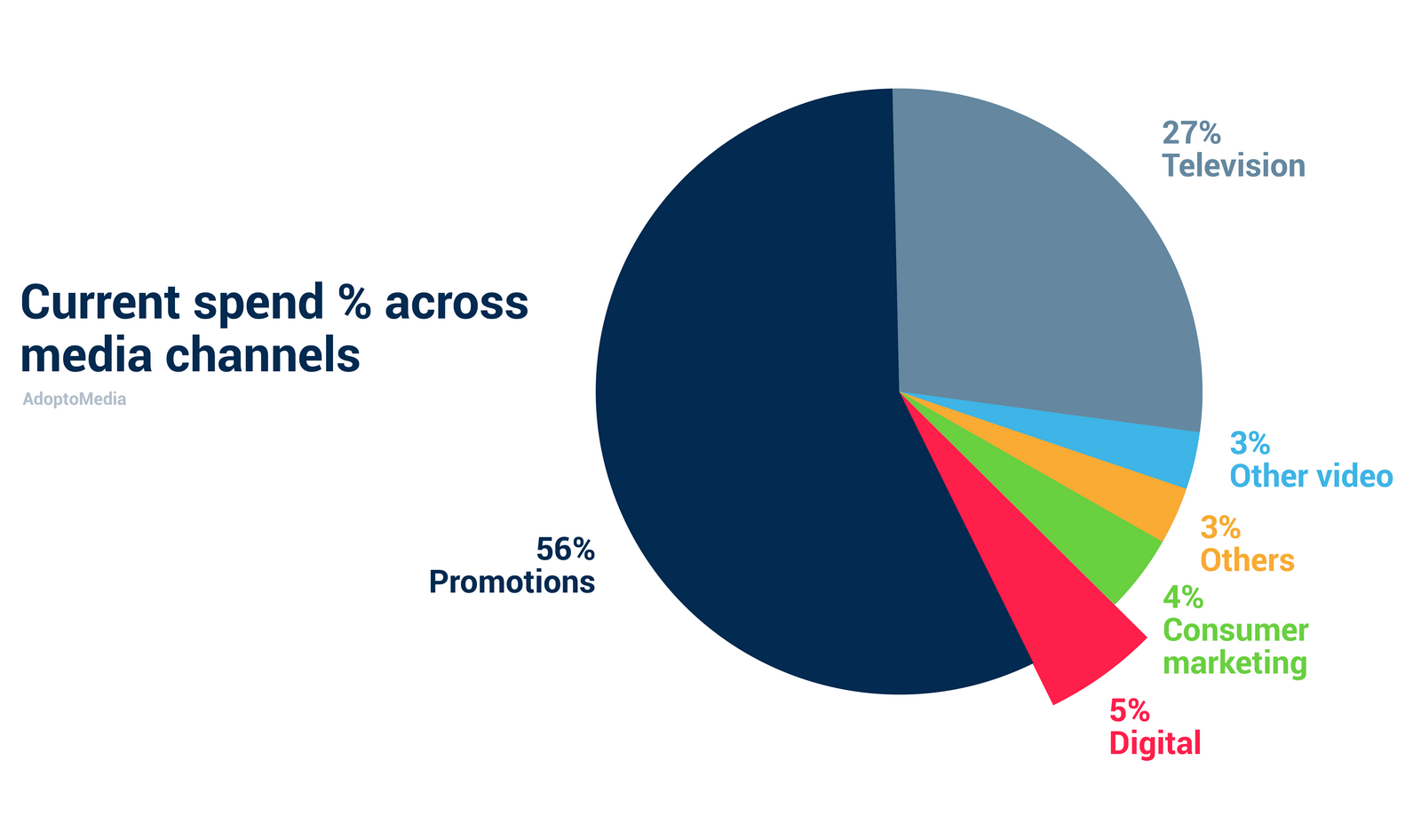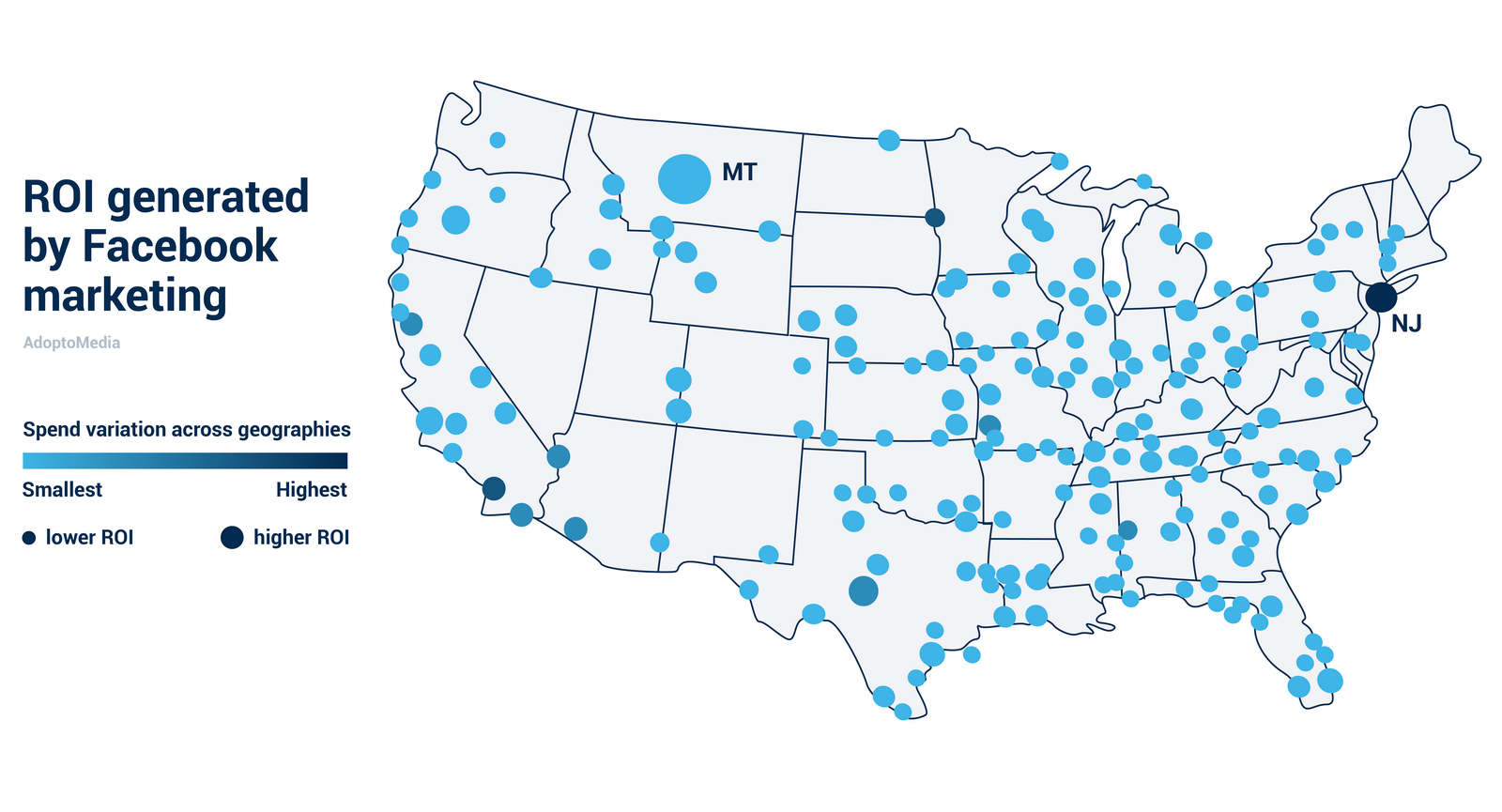
Over the last 40 years there have been some significant changes in Marketing Mix Optimization: not only different models came and went, but also new advertising channels appeared. The digital revolution has changed the industry significantly, allowing companies to reach more potential customers and make better targeted ads. With so many new marketing channels the issue of optimal budget allocation is as relevant as ever. And some companies are unaware that huge databases they possess are the key to making more informed marketing decisions. By using this high-quality data along with improved techniques, companies can react quickly to changes in consumer behavior. This agility is crucial in the digital age, where advertising campaigns are short-lived. Without the necessary data, even the most sophisticated models are useless.
Accenture successfully introduced more granular data into Media Mix Optimization models complying with GDPR (General Data Protection Regulation) as a result of their partnership with Facebook. Firstly, Facebook records the results of paid advertising campaigns on their platform, then receives client’s consent and finally provides the aggregated data to Accenture, that uses the data in MMM. Such almost real-time feedback allows creating and changing Media Mix Models much quicker. Another perk of this partnership is that the data includes geographic information, ensuring the models will be geographically targeted as well as timely.
Let’s get back to ToyCo. We have already analyzed their use of different MMO models, and now we’ll see how Facebook data was applied in their case. As a large company they work at a national level and apply a generic national Media Mix plan, so the results of media campaigns are also measured at a national level, but the drawback of this approach is that it prevents targeted purchase of media. Accenture introduces the granular data from Facebook into the algorithms to create 210 targeted models, one for each DMA (direct marketing area) and then compare the aggregated results with the national model. For their experimental model they used data on marketing and sales from May 2014 through April 2017. In the pie chart below you see ToyCo’s original budget distribution across media channels.

Like any large company, they employ various advertising platforms. However, what should really catch your attention is how unevenly the budget is allocated. Promotions and TV together account for 83% of the media budget, which means that investment in other channels could be increased at the expense of these two channels without significantly affecting their performance.
Accenture singles out what share of total media budget Facebook gets, which is only 0.05%, to make the result or their study more evident. Given the extremely small investment in Facebook marketing, it’s no wonder that the ROI it generated was among the lowest in the national model, while TV and promotions generated the majority of incremental sales, clearly due to their massive share of the media budget. However, compared to other media channels, Facebook’s ROI was quite promising, and the same can be said for the digital segment as a whole.
The most important advantage of a DMA level model is that it allows you to see how Facebook ads performed in every local market. In the bubble chart below the size of the bubbles shows the relative amount of ROI generated by Facebook marketing in that area. The color represents the levels of investments in Facebook marketing there. You can see that despite low investments compared to New Jersey (NJ), Montana (MT) demonstrated significantly higher incremental sales. Marketers can use this information to identify geographic trends and optimize marketing strategies.
 Even though the results may differ significantly from DMA to DMA, aggregated data on this model for all media channels combined showed similar results to the national model, indicating that both are quite accurate. However, with the use of more data and region-specific information, DMA-level models become more effective and responsive to recent changes. To demonstrate the higher effectiveness of the regional model, Accenture calculated the Mean Absolute Percentage Error (MAPE) for each model. A MAPE value of less than 5% is considered optimal. The national model had a MAPE of 4.8%, while the aggregated DMA-level model showed a MAPE of 4.2%, which is 12.5% better.
Even though the results may differ significantly from DMA to DMA, aggregated data on this model for all media channels combined showed similar results to the national model, indicating that both are quite accurate. However, with the use of more data and region-specific information, DMA-level models become more effective and responsive to recent changes. To demonstrate the higher effectiveness of the regional model, Accenture calculated the Mean Absolute Percentage Error (MAPE) for each model. A MAPE value of less than 5% is considered optimal. The national model had a MAPE of 4.8%, while the aggregated DMA-level model showed a MAPE of 4.2%, which is 12.5% better.
So how can this higher accuracy of the latter model be used to optimize ToyCo’s media mix? After the new coefficients are input into the optimization program, it analyzes the results and proposes an optimal media mix. Typically, there would be constraints pre-defined by a client that only allow the program to adjust budget shares for any advertising channel within a certain range. However, in the given study, Accenture sets the restriction only for promotions and TV, allowing all other channel budgets to be modified without restriction. This approach gives smaller channels, such as Facebookin the case, the opportunity to increase their share significantly if the optimization program determines it is necessary. It’s worth mentioning that such uncontained growth is not perfect or practical and is only discussed in this case to demonstrate how a more accurate and targeted model can result in changes in marketing.
 The graph above compares two marketing mix optimization recommendations based on the national model and the DMA level model. Since the DMA model recorded higher incremental sales generated by Facebook marketing, it recommends to reallocate more money to this channel than the national model. Originally Facebook accounted only for 0.05% of the total media spend; the national model increased its share to 2.0%, and the DMA level model increased it to 5.2%. And after the two recommended media mix plans were implemented, they showed different results. The DMA level generated mix resulted in a 2.9% rise in sales, while the national model generated a 0.9% increase.
The graph above compares two marketing mix optimization recommendations based on the national model and the DMA level model. Since the DMA model recorded higher incremental sales generated by Facebook marketing, it recommends to reallocate more money to this channel than the national model. Originally Facebook accounted only for 0.05% of the total media spend; the national model increased its share to 2.0%, and the DMA level model increased it to 5.2%. And after the two recommended media mix plans were implemented, they showed different results. The DMA level generated mix resulted in a 2.9% rise in sales, while the national model generated a 0.9% increase.
Though the total marketing budget didn’t change, reallocation between digital channels gave us some insights into the performance of Facebook marketing. This will enable companies to strategically purchase Facebook advertising and generate higher ROI for Facebook than we currently see. That’s how more granular data allows to create more accurate models, and it can be applied not only to Facebook, but also to other digital channels. Such targeted models designed at a DMA level should become the new standard in the industry for analyzing and optimizing marketing strategies, even for companies operating at a national level, because DMA models proved to be more accurate for a national level as well. And with advertising becoming more and more targeted and personalized, marketers should learn how to take advantage of that and use it in the best interests of their businesses.
AdoptoMedia offers accurate and advanced econometric models for marketing mix evaluation. We help our clients to measure the incremental impact of every channel in the media mix by product and region, find ineffective ones and optimize the budget allocation. Our platform allows for in-campaign tactical adjustments to adapt to changing market conditions and increase ROMI by 10-30%. Advanced AI technology updates ROMI models with ingestion of new data.


